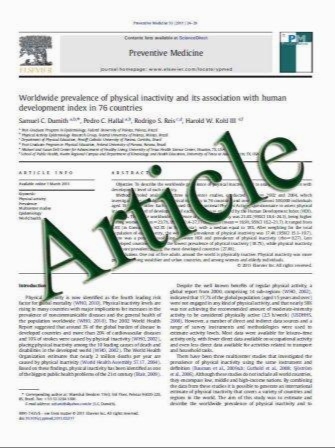The impact of substance abuse on osteoporosis screening and risk of osteoporosis in women with psychotic disorders
- نوع فایل : کتاب
- زبان : انگلیسی
- مؤلف : D. L. Kelly & C. S. Myers & M. T. Abrams & S. Feldman & J. Park & R. P. McMahon & J.-C. Shim
- چاپ و سال / کشور: 2010
Description
Summary Review of the 1-year prevalence of screening for osteoporosis and of osteoporosis or idiopathic fracture in Maryland Medicaid administrative records found that screening rates did not differ among women in the control population, women with psychosis, and women with major mood disorders, but were reduced compared to controls in women with substance use disorder, with or without psychosis. Prevalence of osteoporosis was increased compared to controls in women with major mood disorders or women over 55 dually diagnosed with psychosis and substance use disorder. Introduction Osteoporosis is a major public health concern. Substance abuse and psychosis may be risk factors, however, frequency of screening and disease risk in women with psychotic disorders and substance use disorder (SUD) remains unknown. Methods This study examined rates (FY 2005) of osteoporosis screening and disease risk inMedicaid enrolled women aged 50 to 64 (N=18,953). Four diagnostic groups were characterized: (1) psychosis, (2) SUD, (3) major mood disorder, and (4) controls. The interaction of psychosis and SUD on screening and disease prevalence of osteoporosis was tested. Results The prevalence of osteoporosis across the entire population was 6.7%. Four percent of those without an osteoporosis diagnosis received osteoporosis screening with no notable differences between psychosis and controls. Those with SUD, however, had a significant reduction in screening compared to controls (OR=0.61, 95% CI=0.40–0.91, p= 0.016). Women with a major mood disorder were more likely to have osteoporosis in their administrative record (OR=1.32, 95% CI=1.03–1.70, p=0.028) compared to controls. Those who were dually diagnosed (SUD and psychosis) in the oldest ages (55–64 years) had a markedly higher prevalence of osteoporosis compared to controls (OR=6.4 CI=1.51–27.6, p =0.012), whereas this interaction (SUD and psychosis) was not significant in the entire population over age 49. Conclusions Osteoporosis screening in the Medicaid population is significantly lower for women with SUD, after adjusting for age, race, and Medicaid enrollment category. The prevalence of osteoporosis appears markedly elevated in those with major mood disorders and those over age 55 dually diagnosed with schizophrenia and SUD.
Osteoporos Int (2011) 22:1133–1143 DOI 10.1007/s00198-010-1294-2 Received: 5 August 2009 / Accepted: 13 April 2010 / Published online: 9 June 2010


